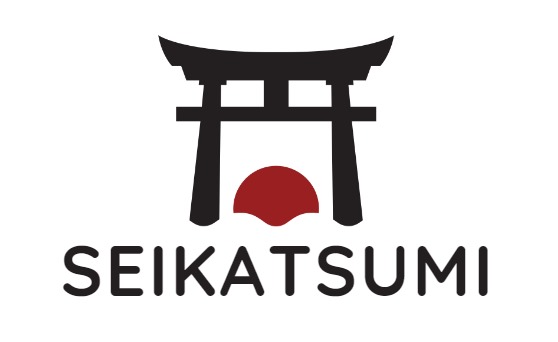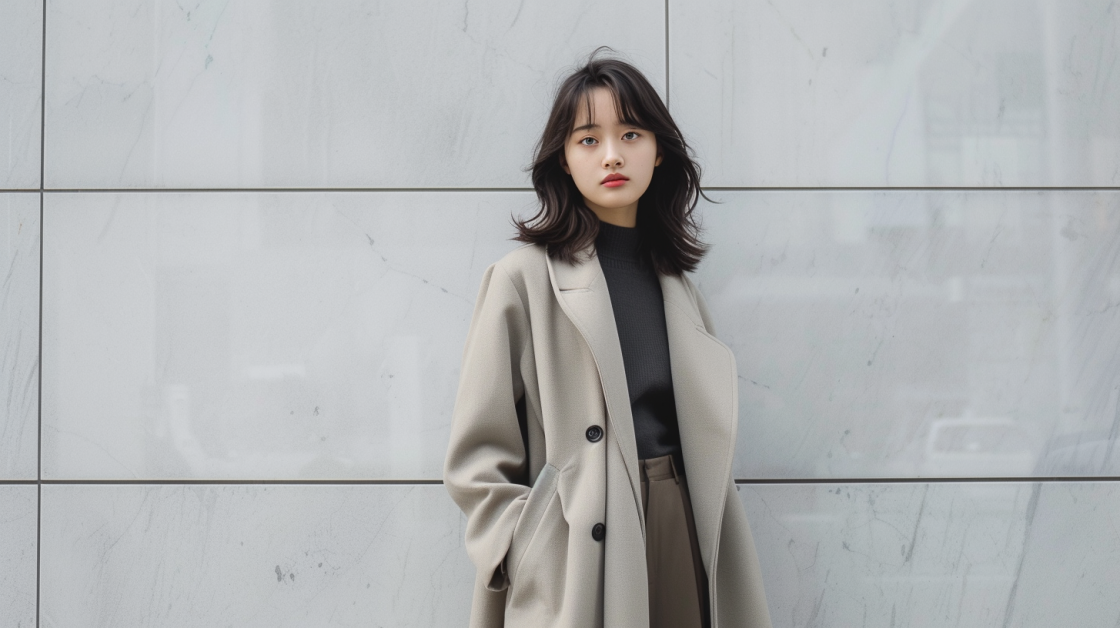Are you captivated by the elegance of Japanese minimalist fashion? You’re not alone in this journey!
I also have a deep appreciation for the beauty in simplicity and the sophistication of clean lines.
That’s why I’ve devoted so much time to understanding and embracing this style.
Dive into the world of Japanese minimalist fashion, where simplicity meets elegance, and every piece is a statement of refined taste.
So, let’s embark on this journey together! 😉
Origins of Japanese Minimalist Fashion
As a fashion style, Japanese minimalism has gained immense popularity worldwide in recent years.
Its simple, clean, and functional designs have made it a favorite among fashion enthusiasts who prefer a more understated and elegant look.
Cultural Influences
Japanese minimalism is deeply rooted in the country’s culture and history. The Japanese have long valued simplicity and minimalism in all aspects of life, from their tea ceremonies to their architecture.
The concept of “ma,” or negative space, is central to Japanese aesthetics and is reflected in their fashion as well. The use of neutral colors, clean lines, and simple silhouettes is reminiscent of the traditional Japanese kimono, which also emphasizes the beauty of negative space.
Key Designers and Brands
While Japanese minimalism has been a part of the country’s culture for centuries, it wasn’t until the 1980s that it gained recognition as a fashion style.
Designers like Yohji Yamamoto, Issey Miyake, and Rei Kawakubo of Comme des Garçons brought Japanese minimalism to the forefront of the fashion world with their avant-garde designs.
Their use of asymmetrical cuts, unconventional fabrics, and oversized shapes challenged traditional notions of beauty and femininity.
Today, Japanese minimalist fashion has evolved to include a wide range of designers and brands, from high-end luxury labels like Comme des Garçons to more affordable options like Uniqlo.
The focus remains on simplicity, functionality, and quality, with an emphasis on timeless designs that can be worn for years to come.
Hey you! Are you interested in more fashion trends? Then be sure to check out our top fashion articles! You definitely can’t miss it!
Japanese Traditional Clothes Women: The Beauty of Kimonos & Yukatas 2024
Japanese Winter Jackets Women: 40+ Best Chic Warmth and Styles for the 2024 Season!
40+ Japanese Winter Fashion 2024: Warm Your Heart and Elevate Your Look!
Principles of Minimalist Design

As someone who loves Japanese minimalist fashion, I have come to appreciate the simplicity and elegance of this style.
Simplicity and Functionality
The first principle of minimalist design is simplicity. This means that the design should be clean and uncluttered, with only the essential elements included.
In Japanese fashion, this translates to clean lines and simple shapes that are both functional and aesthetically pleasing.
Functionality is another important aspect of minimalist design. Clothes should be comfortable and easy to wear, with no unnecessary frills or decorations.
This means that Japanese fashion often features loose-fitting, breathable fabrics that allow for movement and comfort.
Neutral Color Palettes

Another hallmark of Japanese minimalist fashion is the use of neutral color palettes. This includes shades of white, black, gray, and beige.
These colors are timeless and versatile, making them the perfect choice for minimalist fashion.
Neutral colors also allow the focus to be on the design of the clothes, rather than the color.
This means that the clothes can be worn in a variety of settings and paired with different accessories, making them a great investment for any wardrobe.
Natural Fabrics
The final principle of minimalist design is the use of natural fabrics. This includes cotton, linen, silk, and wool.
These fabrics are breathable, comfortable, and durable, making them the perfect choice for minimalist fashion.
Natural fabrics also have a timeless quality that fits perfectly with the minimalist aesthetic.
They are simple, elegant, and long-lasting, making them a great investment for anyone who loves Japanese minimalist fashion.
Influence on Global Fashion
Minimalist fashion has been a significant influence on global fashion for decades. Japanese minimalist fashion, in particular, has been a major contributor to this trend.
Its influence is evident in many areas of fashion, from high-end designer clothing to streetwear.
Adoption by Western Designers
Western designers have been heavily influenced by Japanese minimalist fashion. Brands like Calvin Klein and Jil Sander have adopted minimalist principles in their designs, creating clothing that is both simple and elegant.
Japanese designers like Issey Miyake and Yohji Yamamoto have also had a significant impact on Western fashion.
Their designs, which often feature clean lines and simple silhouettes, have been embraced by fashion-conscious consumers around the world.
Minimalism in Streetwear
Minimalist fashion has also made its way into streetwear. Brands like A Bathing Ape and Comme des Garçons have been at the forefront of this movement.
Their designs often feature simple graphics and clean lines, creating a look that is both stylish and understated.
This minimalist approach has been embraced by many streetwear enthusiasts, who are drawn to its simplicity and versatility.
How to Style Minimalist Garments
Minimalist fashion is all about simplicity and understated elegance. It’s a timeless style that is perfect for those who prefer a clean and uncluttered look.
Layering Techniques

Layering is an important aspect of minimalist fashion. It allows you to create depth and texture in your outfit without adding unnecessary elements. When layering, it’s important to keep the colors and fabrics simple and cohesive.
Stick to neutral colors like black, white, beige, and gray, and choose fabrics that complement each other, such as cotton, linen, and wool.
One popular layering technique is to wear a long-sleeved shirt or turtleneck underneath a sleeveless dress or jumpsuit. This creates a sophisticated and chic look that is perfect for both casual and formal occasions.
Another layering technique is to wear a blazer or cardigan over a simple top and pants.
This adds structure and polish to your outfit while still maintaining a minimalist aesthetic.
Accessorizing with Minimalism

When it comes to accessorizing, less is more in minimalist fashion. Choose accessories that are simple and functional, such as a leather tote bag or a pair of classic black pumps.
Avoid accessories that are too flashy or ornate, as they can detract from the overall simplicity of your outfit.
One way to add interest to your outfit without overdoing it is to play with textures. For example, you can wear a pair of suede ankle boots with a wool coat, or a silk scarf with a cotton shirt.
This creates a subtle contrast that adds depth and dimension to your outfit.
Sustainability and Minimalism

As someone who cares about the environment, I am pleased to say that Japanese minimalist fashion is often associated with eco-friendly practices.
This is because minimalism emphasizes quality over quantity, and eco-friendly materials are often of higher quality than their synthetic counterparts.
Eco-Friendly Practices
One of the most notable eco-friendly practices in Japanese minimalist fashion is the use of natural fibers such as cotton, linen, and silk. These materials are biodegradable and renewable, making them a sustainable choice.
Some brands also use recycled materials to create their minimalist pieces, reducing waste and minimizing their impact on the environment.
In addition to using eco-friendly materials, many Japanese minimalist fashion brands prioritize ethical manufacturing practices.
This means that they pay fair wages to their workers and ensure that their working conditions are safe and healthy. By doing so, these brands are not only helping the environment but also supporting workers and their communities.
Longevity of Minimalist Pieces
Another aspect of sustainability in Japanese minimalist fashion is the longevity of the pieces themselves. Minimalist pieces are designed to be timeless and versatile, meaning they can be worn for years without going out of style.
This is in contrast to fast fashion, where pieces are designed to be worn only a few times before falling apart or going out of style.
By investing in high-quality minimalist pieces, we can reduce our overall consumption and minimize our impact on the environment.
Plus, we get to enjoy beautiful, timeless pieces that we can wear for years to come.
My personal favorite Outfit!

I am an absolute fan of understated color tones like grey and beige, and I love combining them with black and white for a perfectly balanced look.
The simplicity of these colors creates a harmonious and elegant aesthetic, embodying the essence of minimalist fashion.
To add a unique touch to my outfits, I prefer using light, delicate accessories. These subtle embellishments give just the right amount of charm without overwhelming the simplicity of the attire.
Moreover, I often complete my look with a pair of black boots, which not only add a bit of edge but also maintain the minimalist vibe.
This combination of neutral shades, minimal accessories, and classic black boots creates a look that’s both sophisticated and effortlessly chic.
Frequently Asked Questions
What defines Japanese minimalist fashion?
Clean lines, neutral colors, and simple, uncluttered desig
Is Japanese minimalist fashion versatile?
Yes, it’s highly versatile, suitable for various occasions and styles.
Do accessories play a role in this fashion style?
Yes, but sparingly; subtle and understated accessories enhance the look.
If you liked this blog article about Japanese Minimalist Fashion, don’t forget to follow us on Pinterest so you don’t miss any more tattoo tips.
Let us know, which of the above is your favorite minimalsitic Outfit!

























Your ability to connect with the readers through your writing is remarkable. I felt like you were speaking directly to me.
Kudos for highlighting such an important issue. Your perspective is both enlightening and inspiring.